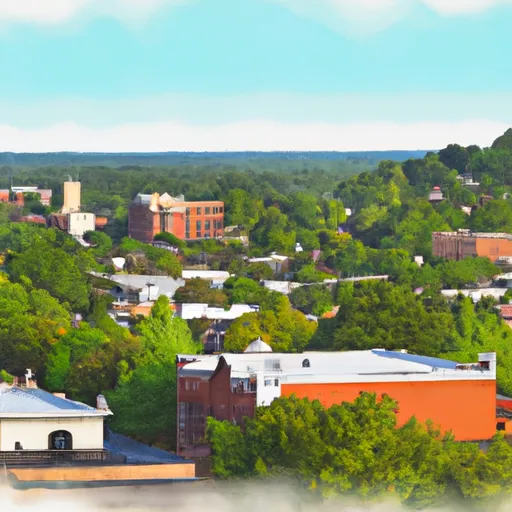-
 Snoflo Premium
Snoflo Premium
Get unlimited access to all our content
With no Ad interruptions! - Start Your Free Trial Login with existing account
Lithia-Springs
Eden Index
Climate
7.8
•
Recreation
6.3
•
Community
2.6
•
Safeguard
6.0/10

Lithia Springs is a small city located in Douglas County, Georgia. The climate in Lithia Springs is typically humid subtropical, characterized by hot, humid summers and mild winters. Summers are often hot with temperatures reaching the upper 80s to 90s°F (30-35°C) and high humidity levels. Winters are generally mild with temperatures ranging from the 40s to 60s°F (5-15°C).
In terms of hydrology, the city is named after the Lithia Springs, a natural spring that has been known for its mineral-rich water since the 19th century. The water from the springs contains lithium salts, which were believed to have therapeutic benefits. Today, the Lithia Springs Park offers visitors the chance to enjoy the mineral spring water and learn about its historical significance.
For outdoor recreation, Lithia Springs provides several opportunities. Sweetwater Creek State Park is a popular destination with hiking trails, picnic areas, and a picturesque creek. Visitors can explore the park's historic ruins, enjoy birdwatching, and even go kayaking or canoeing in the creek. The surrounding area also offers golf courses, sports fields, and other parks for outdoor activities.
What is the Eden Index?
The Snoflo Eden Index serves as a comprehensive rating system for regions, evaluating their desirability through a holistic assessment of climate health, outdoor recreation opportunities, and natural disaster risk, acknowledging the profound impact of these factors on livability and well-being.
Climate Health Indicator (CHI): 7.8
Lithia-Springs receives approximately
1331mm of rain per year,
with humidity levels near 83%
and air temperatures averaging around
16°C.
Lithia-Springs has a plant hardyness factor of
7, meaning
plants and agriculture in this region tend to thrive during the non-winter months.
By considering the ideal temperature range, reliable water supplies, clean air, and stable seasonal rain or snowpacks, the Climate Health Indicator (CHI) underscores the significance of a healthy climate as the foundation for quality living.
A healthy climate is paramount for ensuring a high quality of life and livability in a region, fostering both physical well-being and environmental harmony. This can be characterized by ideal temperatures, reliable access to water supplies, clean air, and consistent seasonal rain or snowpacks.
Weather Forecast
Streamflow Conditions
Apalachicola
Area Rivers
Apalachicola
Snowpack Depths
Apalachicola
Reservoir Storage Capacity
Apalachicola
Groundwater Levels
Recreational Opportunity Index (ROI): 6.3
The Recreational Opportunity Index (ROI) recognizes the value of outdoor recreational options, such as parks, hiking trails, camping sites, and fishing spots, while acknowledging that climate plays a pivotal role in ensuring the comfort and consistency of these experiences.
Access to outdoor recreational opportunities, encompassing activities such as parks, hiking, camping, and fishing, is crucial for overall well-being, and the climate plays a pivotal role in enabling and enhancing these experiences, ensuring that individuals can engage in nature-based activities comfortably and consistently.
Camping Areas
| Campground | Campsites | Reservations | Toilets | Showers | Elevation |
|---|---|---|---|---|---|
| McKinney - Allatoona Lake | None | 889 ft | |||
| Lake Allatoona Military - Fort McPherson | None | 891 ft | |||
| Dobbins Lakeside Military | None | 1,079 ft | |||
| F.D. Roosevelt State Park | None | 1,272 ft | |||
| Old Hwy 41 - Allatoona Lake | None | 932 ft | |||
| Clark Creek North - Allatoona Lake | None | 896 ft | |||
| Payne - Allatoona Lake | None | 848 ft | |||
| Clark Creek South - Allatoona Lake | None | 858 ft | |||
| Cochran Mill County Park | None | 937 ft | |||
| World Famous Lake Military - Atlanta NAS | None | 920 ft |
Nearby Ski Areas
Catastrophe Safeguard Index (CSI):
The Catastrophe Safeguard Index (CSI) recognizes that natural disaster risk, encompassing floods, fires, hurricanes, and tornadoes, can drastically affect safety and the overall appeal of an area.
The level of natural disaster risk in a region significantly affects safety and the overall livability, with climate change amplifying these risks by potentially increasing the frequency and intensity of events like floods, fires, hurricanes, and tornadoes, thereby posing substantial challenges to community resilience and well-being.
Community Resilience Indicator (CRI): 2.6
The Community Resilience Indicator (CRI) recognizes that education, healthcare, and socioeconomics are crucial to the well-being of a region. The CRI acknowledges the profound impact of these elements on residents' overall quality of life. By evaluating educational resources, healthcare accessibility, and economic inclusivity, the index captures the essential aspects that contribute to a thriving community, fostering resident satisfaction, equity, and social cohesion.

